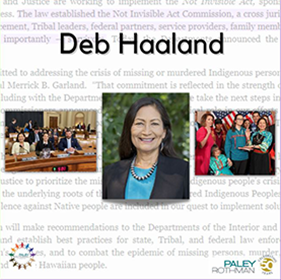April 15, 2016
Pesticide Regulation Down on the Farm
- April 15, 2016
- Publication: MSBA Bar Bulletin
- Related Attorneys:
- Related Practice Areas:
The choices available to Maryland growers for chemical tools (herbicides, insecticides, fungicides) to protect their crops, orchards, vineyards, nurseries, gardens, turf and timber have shifted and narrowed dramatically over the past decade, and the changes keep on coming.
As mandated by the Food Quality Protection Act of 1996 (FQPA), the US Environmental Protection Agency (EPA) embarked on a 15-year effort to reassess more than 600 pesticide active ingredients – used to formulate tens of thousands of finished pesticide products – under updated safety and scientific standards. As a consequence, EPA cancelled and/or severely restricted the use of scores of pesticides used in agriculture, including some of the then-most popular and widely used products on the market. Particularly hard hit were organophosphate (OPs) insecticides, carbamates, and compounds considered probable (B2) human carcinogens.
Just as growers and the pesticide industry were adjusting to the seismic changes brought about by the FQPA, other regulatory issues of potentially far-reaching importance have come to the fore. One long-dormant issue concerns the potential impacts of pesticide usage on endangered and threatened species. Over the past decade, numerous lawsuits have been brought against EPA for its alleged failure to adequately consider endangered species in making pesticide registration and labeling decisions. In response, EPA has already imposed restrictions on the use of several pesticides to protect, for example, salmonid species in the Northwest and an endangered frog in California. EPA is expected to impose use restrictions on many more pesticides in the years ahead in connection with its current pesticide “registration review” process. These restrictions may range from limitations on the rates, frequency, and timing of applications, to mandatory set-backs for applications near aquatic or other environmentally sensitive areas, to outright use prohibitions.
Similarly, there is significant scientific debate concerning the possible role of neonicotinoid insecticides in the sharp declines in honey bee and other pollinator populations observed over the past decade. For example, during April 2014-April 2015 alone, US commercial beekeepers reportedly lost 42 percent of their colonies. Ironically, the neonicotinoids were introduced to the market in the late 1990s with great fanfare as a much safer alternative to the OPs, then in widespread use. By far the most prominent of the “neonics” is imidacloprid, currently the most widely used insecticide in the world. Many observers anticipate that EPA will impose significant restrictions on the use of imidacloprid and other neonics within the next few years. In the meantime, last year both Home Depot and Lowes announced that they would phase out the sale of all neonics. In 2013, the EU instituted a moratorium on most uses of the neonics, which remains in effect.
...
News
March 21, 2023
Michelle Chapin’s Article on the Use of Arbitration Causes in Trusts is Published by the MSBA’s Estate & Trust Law Section
Michelle Chapin, a Principal in Paley Rothman’s Estate Planning department, authored an article titled "(Un)Enforceability of Arbitration Clauses in Maryland Trusts" in the MSBA's Estate & Trust Law Section Newsletter Volume 29 Issue 1.
Read MoreBlog

Sec. Deb Haaland – First Native American in the Cabinet
Sec. Deb Haaland is the first Native American to serve in the President’s cabinet and has been instrumental in bringing attention and action to the horrific incident rate of...
Read MoreResource Center

Paley Rothman shares this library of resources with clients and friends of the firm to help them stay ahead of legal and business developments and trends. Here, you will find helpful tips and tools written by our attorneys and relevant to our areas of practice.
Read More